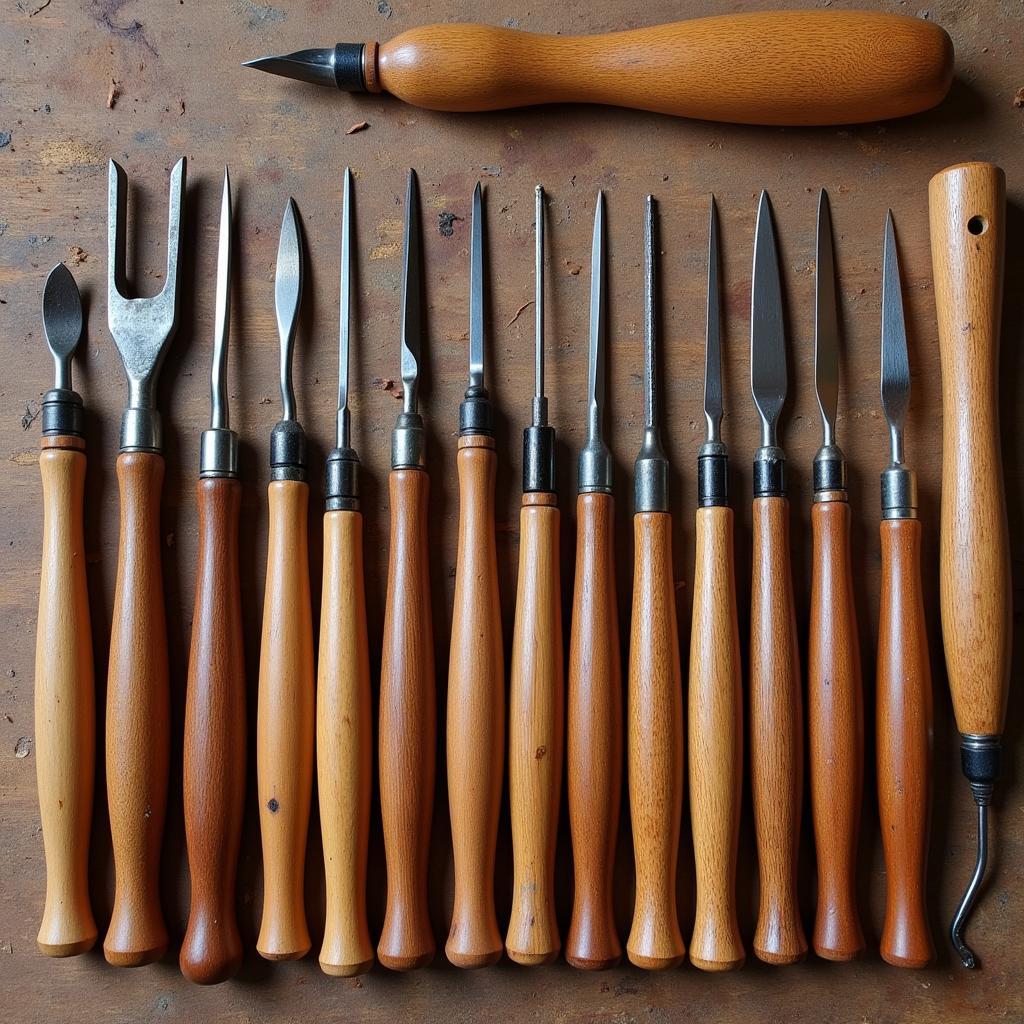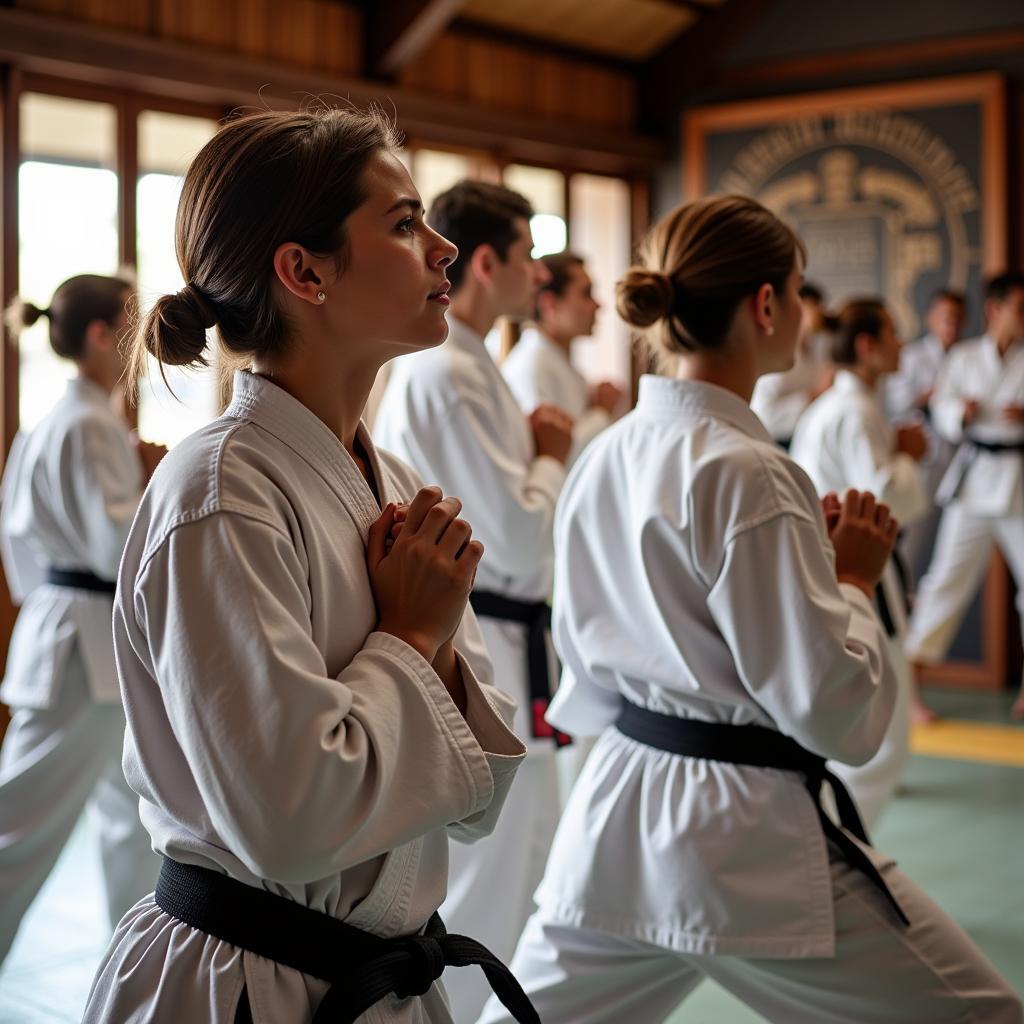Exploring the Exquisite World of Art Nouveau Wood Carving
Art Nouveau Wood Carving, a captivating fusion of nature’s organic forms and the sinuous lines of the Art Nouveau movement, represents a unique chapter in the history of decorative arts. From intricate furniture pieces to delicate wall panels, this style captures a moment in time where craftsmanship and artistic vision intertwined seamlessly. Let’s delve into the enchanting world of Art Nouveau wood carving and discover its enduring allure.
The Naturalistic Inspiration Behind Art Nouveau Wood Carving
At the heart of Art Nouveau lies a deep reverence for the natural world. This is vividly reflected in the wood carvings of the era, which often feature flowing lines, stylized floral motifs, and depictions of insects, birds, and other creatures. Think swirling vines, blossoming flowers, and graceful dragonflies, all meticulously carved into rich woods like mahogany, walnut, and oak. The artists sought to capture the essence of life’s dynamism, translating the natural world’s inherent fluidity into tangible, three-dimensional forms. Imagine a dining table crafted from polished oak, its legs adorned with intricately carved irises, their petals unfurling in elegant curves, reaching towards the light.
Did you know that many Art Nouveau wood carvers found inspiration in Japanese woodblock prints? The flattened perspectives and emphasis on organic forms found in these prints resonated deeply with the Art Nouveau aesthetic, further fueling the movement’s embrace of nature-inspired imagery. This cross-cultural exchange enriched the artistic vocabulary of Art Nouveau, resulting in a unique blend of Eastern and Western influences. You might find some beautiful art dining chairs that reflect this style.
Art Nouveau Wood Carving: From Furniture to Architectural Details
Art Nouveau wood carving found expression in a wide array of applications. While furniture was a primary canvas for these artistic explorations, the style also extended to architectural details, decorative panels, and smaller objects like picture frames and jewelry boxes. Grand doorways were framed with elaborately carved architraves, featuring swirling patterns and stylized floral motifs. Wall panels depicted scenes from mythology and folklore, their figures rendered in flowing lines and graceful poses. Even the smallest details, like the handle of a drawer or the finial of a bedpost, were imbued with the distinctive Art Nouveau touch. Perhaps you’d be interested in an art nouveau sideboard for your home.
What are the Key Characteristics of Art Nouveau Wood Carving?
The key characteristics of Art Nouveau wood carving are its emphasis on organic forms, flowing lines, asymmetry, and stylized representations of nature. The style avoids sharp angles and straight lines, favoring instead the gentle curves and undulating forms found in the natural world. This creates a sense of movement and dynamism, as if the carved elements are themselves alive and growing.
How Can I Identify Authentic Art Nouveau Wood Carvings?
Identifying authentic Art Nouveau wood carvings requires a keen eye for detail and a familiarity with the stylistic conventions of the period. Look for the signature flowing lines, naturalistic motifs, and the use of high-quality woods. Pay attention to the craftsmanship and the level of detail, as authentic pieces are typically characterized by meticulous execution. You might enjoy looking at some art table chairs.
 Wood carving tools used in Art Nouveau period
Wood carving tools used in Art Nouveau period
Art Nouveau Wood Carving Today
Though the Art Nouveau period peaked in the late 19th and early 20th centuries, its influence can still be felt today. Contemporary artists and designers continue to draw inspiration from the movement’s organic forms and elegant aesthetic. Antique Art Nouveau pieces are highly sought after by collectors, testament to the enduring appeal of this distinctive style. Consider exploring cape cod folk art or arts and crafts dining chairs for related styles.
“The beauty of Art Nouveau wood carving lies in its ability to capture the ephemeral essence of nature,” says renowned art historian, Dr. Eleanor Vance. “It’s a testament to the power of human creativity to transform natural forms into objects of enduring beauty.” Another expert, furniture conservator, Mr. James Blackwood, adds, “The level of craftsmanship displayed in these pieces is truly remarkable. Each carving is a testament to the skill and dedication of the artist.”
In conclusion, art nouveau wood carving remains a captivating art form, showcasing the harmonious blend of nature’s inspiration and human artistry. Its flowing lines, organic forms, and intricate details continue to inspire awe and admiration.
FAQ
- What is the typical price range for antique Art Nouveau wood carvings?
- Are there any contemporary artists specializing in Art Nouveau wood carving?
- How can I care for and maintain Art Nouveau wood furniture?
- What are some of the most famous examples of Art Nouveau wood carving?
- Where can I find resources to learn more about Art Nouveau wood carving?
- What are some common woods used in Art Nouveau wood carving?
- How can I distinguish Art Nouveau wood carving from other similar styles?
For assistance, contact us at Phone: 02462573573, Email: danteum@gmail.com or visit Savico Megamall, 7-9 Đ. Nguyễn Văn Linh, Gia Thụy, Long Biên, Hà Nội 10000, Việt Nam. We have a 24/7 customer service team.



